Sony releases tool to restore factory software on Xperia smartphones, and the modding community likes it
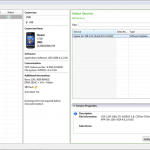
Japanese manufacturer Sony has announced the release of a beta tool that can be used to restore factory software on a number of Xperia smartphones. The program targets green droid modders that wish to go back to stock, after running custom distributions such as CyanogenMod 10.
Sony says that the beta tool is released at the request of the Android community and currently works for the Xperia S, Xperia arc and Xperia arc S, with plans to increase the number of supported devices. At the moment users only have the ability to restore to a single software variant on each smartphone, but the Japanese manufacturer says it intends to include a wider version selection in the future.
Interactive map of the Blitz unveiled

An interactive online map showing the location of bombs dropped on London during World War II proved so popular when first launched earlier today, that the site immediately went down under the barrage of visitors. Like the survivors of that infamous moment in history, the site picked itself up, dusted itself off, kept calm, and carried on once more, but is still going offline periodically.
The Bomb Sight project was created by a team from the University of Portsmouth using London WWII bomb census data (taken between October 1940 and June 1941) supplied by The National Archives, and shows visitors where the bombs fell during the Blitz, and what type they were.
HTC announces Butterfly -- 5-inch 1080p display and quad-core power
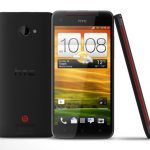
Nearly two months ago HTC teased Android enthusiasts with the J Butterfly, but sadly the handset was only for the Japanese market. On Friday, the Taiwanese manufacturer introduces the global variant, simply dubbed Butterfly, sporting similar specifications.
The Butterfly features a 5.0-inch SuperLCD 3 display with a 1920 x 1080 resolution. Power comes from a 1.5GHz quad-core Qualcomm Snapdragon S4 processor paired with an Adreno 320 video card and 2GB of RAM. On top of the 16GB of internal storage, the Butterfly has a microSD card slot which can extend the capacity by an additional 32GB. HTC is, however, evasive when it comes to the operating system, but it's fair to assume that it ships with Android 4.1 Jelly Bean, similar to the Droid DNA and J Butterfly.
Google Now powers up with new features: dictate G+ posts, song ID, boarding passes, more
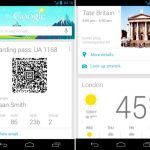
Google first introduced its Siri-like voice search Google Now in Android 4.1 (Jelly Bean). Functionality was rather limited at first, but the search giant eventually added new "cards" (data feeds on user-selected topics) and even Gmail integration. With the latest iteration released today, users can do a lot more with Google Now, including dictate Google+ posts and show United Airlines boarding passes.
Users can power up Google Now, tap on the microphone icon, say "Post to Google Plus" and then simply add their message. Automatic posting is not enabled, so users can edit and select the circles which will see the message. Another new feature is the ability to scan barcodes, which is triggered by the fairly intuitive command "Scan a barcode". Using the camera, Google Now allows users to take a picture of the item in order to display relevant product information.
Microsoft's Android bashing campaign goes down in flames as #WindowsRage trends

What was Microsoft thinking? The software giant initiated a campaign on Twitter, dubbed #DroidRage, inviting Android users to share their "malware horror stories", only to have it backfire spectacularly shortly afterwards. A huge number of anti-Microsoft posts with the #WindowsRage hashtag appeared on Twitter and Google+, almost immediately.
The problem with the campaign, apart from the less-than-brilliant concept, is the timing. Criticism of Microsoft’s more recent products, such as Windows 8, Surface and Windows Phone 8, should have caused the company to lay low for a while. Instead, the firm unwittingly gave frustrated users of its new products a unified hashtag to rally behind.
Google makes a 'Play' for IT with new Private Channel

Can Google get further into the business world by combining Apps and the popular Play store? We are about to find out because the company has announced just that approach. Google has been making inroads for sometime now with the information technology crowd thanks to its Apps offering and, with some high profile conquests in the corporate and government realm, has made real progress against Microsoft and the powerful Office 365 offering. Now Google is taking a mobile approach in hopes of getting even more attention from big business.
In this case the search giant is looking to its growing Android success and the attached Play store to get a better foothold. The company has announced a new "Private Channel" for the Play store that will allow for the distribution of internal mobile apps.
You can't trust IDC's 2016 tablet forecast, or any other
On the heals of yesterday's smartphone forecast, the soothsayers at IDC are back with another bold, brash, and probably foolhardy prediction -- this time for tablets. Once again, Microsoft plays third fiddle to Apple and Google. In a market so fast changing, no one should take any 2016 forecast seriously. But, hey, clients don't pay IDC for doing nothing. Is there a refund policy, because few analysts (okay, none really) get the numbers right. IDC has revised its forecast at least three times this year. Now what does that tell you?
Let's start with the newest revision and then look back at how IDC got the numbers wrong and why those four years hence are probably worthless, too. For this year, the firm predicts 122.3 million tablets shipped, up from 117.1 million forecast in September. Yeah, three months ago. That number revised 107.4 million made in June. You can see where this is headed, right? No surprise, 2013 is higher, too: 172.4 million, up from 165.9 million in September and 142.8 million in June. For 2016, new forecast is 282.7 million, up from 261.4 million in September and 221.1 million in June.
Microsoft feels the heat from Android, launches #droidrage campaign

Surely Microsoft is not overcome by joy after IDC placed Windows Phone as the third largest player in the 2016 smartphone market, lingering behind the biggest competitor -- Android. Taking vengeance upon the green droid, the Redmond, Wash.-based software corporation initiated the #DroidRage campaign on Twitter, inviting users to share their Android "malware horror story".
As an Android user myself, I can't help but feel overly amused by Microsoft's idea. The #DroidRage campaign exudes desperation, considering Windows Phone's lowly popularity and embodies anything but a professional attitude, which is expected from one of the largest software companies in the business. Furthermore, Twitter users responding to the save-the-world-from-Android-malware campaign are not necessarily on Microsoft's side.
IDC says I won't have to kiss Steve Ballmer's feet

In March 2011, IDC made the most ridiculous prediction -- that Windows Phone would be second to Android in smartphone market share by 2015. I laughed off the forecast, but promised: "Should IDC's prediction prove to be right, I'll make atonement. If Windows Phone is No. 2 smartphone OS by 2015, I'll kiss Microsoft CEO Steve Ballmer's feet. He can take off his socks and shoes, too". Today IDC revised the numbers. Microsoft's OS share still looks too high but also places third. Lucky me.
The new numbers are dramatically different and support my longstanding contention that the smartphone market is, or was, too volatile to forecast. Android clearly wins the share battle, even by IDC's conservative estimates. The analyst firm had put Android share at 45.4 percent in 2015, followed by Windows Phone and iOS, with 20.9 percent and 15.3 percent, respectively. Now in 2016, Android projection is 63.8 percent share, followed by iOS (19.1 percent) and Windows Phone (11.4 percent). I wouldn't rule out a BlackBerry comeback.
Holiday Android tablet sales surge as selling prices plummet

Analysts continue to crunch Black Friday numbers, and NPD has fresh data out today on several consumer electronics categories, including Android tablets. The good news: sales at US retail are up 177 percent from the same period last year. Revenue: 91 percent. However, average selling prices are way down -- to $151 from $219 a year ago.
The sales figures do not include Kindle Fire, which likely would lift ASPs, as the lowest-priced model sells for $159, which is higher, and new models range from $199 to $499. However, a $129-promotional price days later likely drove down overall selling prices. Right now, that data isn't available.
CyanogenMod 10.1 nightly builds available for Google Nexus 10, soon for US Samsung Galaxy S IIIs

Almost a week ago the team behind the popular custom Android distribution CyanogenMod announced that Android 4.2-based nightly builds for the Google Nexus 10 were on the way. The developers kept their word and have now delivered the first official CyanogenMod 10.1 release for the 10-inch tablet.
The CM10.1 builds for the Nexus 10 (codename "Manta") are available with December 3 and December 4 time-stamps. Users should expect a number of features to be missing due to the early nature of the development and on-going feature porting process. However, Quiet Hours, the battery percentage indicator, and Trebuchet launcher are all included. Steve Kondik, the project's founder, has further good news for CyanogenMod fans.
A third of Android devices now run Ice Cream Sandwich and Jelly Bean

Jelly Bean may be the youngest member of the Android family, but it’s also enjoying some amazing month-on-month growth, based on the number of devices accessing Google Play during the 14 days ending December 3. It still has some way to go to match Gingerbread though, which is yet again the green droid ruler.
On November 13, the search giant introduced its latest sugary treat, Android 4.2. Three weeks later, the new version of Jelly Bean had claimed a distribution level of 0.8 percent, a number aided by Nexus 4 and Nexus 10 sales, and Galaxy Nexus and Nexus 7 upgrades. That growth however, pales in comparison to 4.1 Jelly Bean which is now found on 5.9 percent of green droid devices, an increase of 118 percent when compared to the previous figures released in early November.
Turn your Android device into a mouse

Smartphones and tablets can take on many roles, like delivering recipes in the kitchen to beginner chefs or entertaining owners with kitten videos during their commute. However, the very same devices can also be used to control PCs through an Android app like WiFi Mouse.
As the name might suggest, the app allows green droid smartphones and tablets to operate as wireless mice, that can be connected to a Mac OS X or Windows PC. The interface is fairly simple to use as it employs a classical three-button layout, with a scroll wheel in the middle, and touchpad-like surface. Even though modern mobile devices come with motion sensors, WiFi Mouse still sticks to the tried-and-true touchscreen interface, which is more accurate, to move the cursor around.
Finally! Motorola Droid Razr HD and Maxx to get Android 4.1 Jelly Bean
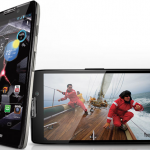
When Motorola introduced the Droid Razr HD and Droid Razr Maxx HD for Verizon Wireless there was one major feature missing from the spec sheet -- Android 4.1 Jelly Bean. Three months later, the big red finally announced that the two smartphones will be upgraded to the first Jelly Bean iteration starting this week.
The software update for the Droid Razr HD and Droid Razr Maxx HD comes in at a fairly significant 276MB in size and it bears the "9.1.41.XT926.Verizon.en.US" moniker. Users should expect a customized Android 4.1 Jelly Bean experience with the typical Motorola add-ons and Verizon-branded apps. Some of the most significant changes introduced by the upgrade include better voice search capability through Google Now, expandable notifications, revised keyboard and an overall improved responsiveness due to Project Butter.
iPhone 5 is now available off-contract
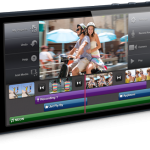
Well that was fast. Little more than two months after Apple launched the iPhone 5 in nine countries, the Cupertino, Calif.-based software corporation offers its latest smartphone free of any carrier obligations. Pricing starts at $649 for the 16GB model and tops $849 for the 64GB version.
The models that Apple offers are actually unlocked GSM units, meaning that using either of the three available versions on a CDMA network such as Verizon Wireless is not possible. For the advantage of owning a carrier-free iPhone 5 prospective buyers have to shell out an additional $450 for the equivalent version available at major US carriers such as AT&T, Sprint or Verizon.
Recent Headlines
Most Commented Stories
© 1998-2025 BetaNews, Inc. All Rights Reserved. Privacy Policy - Cookie Policy.